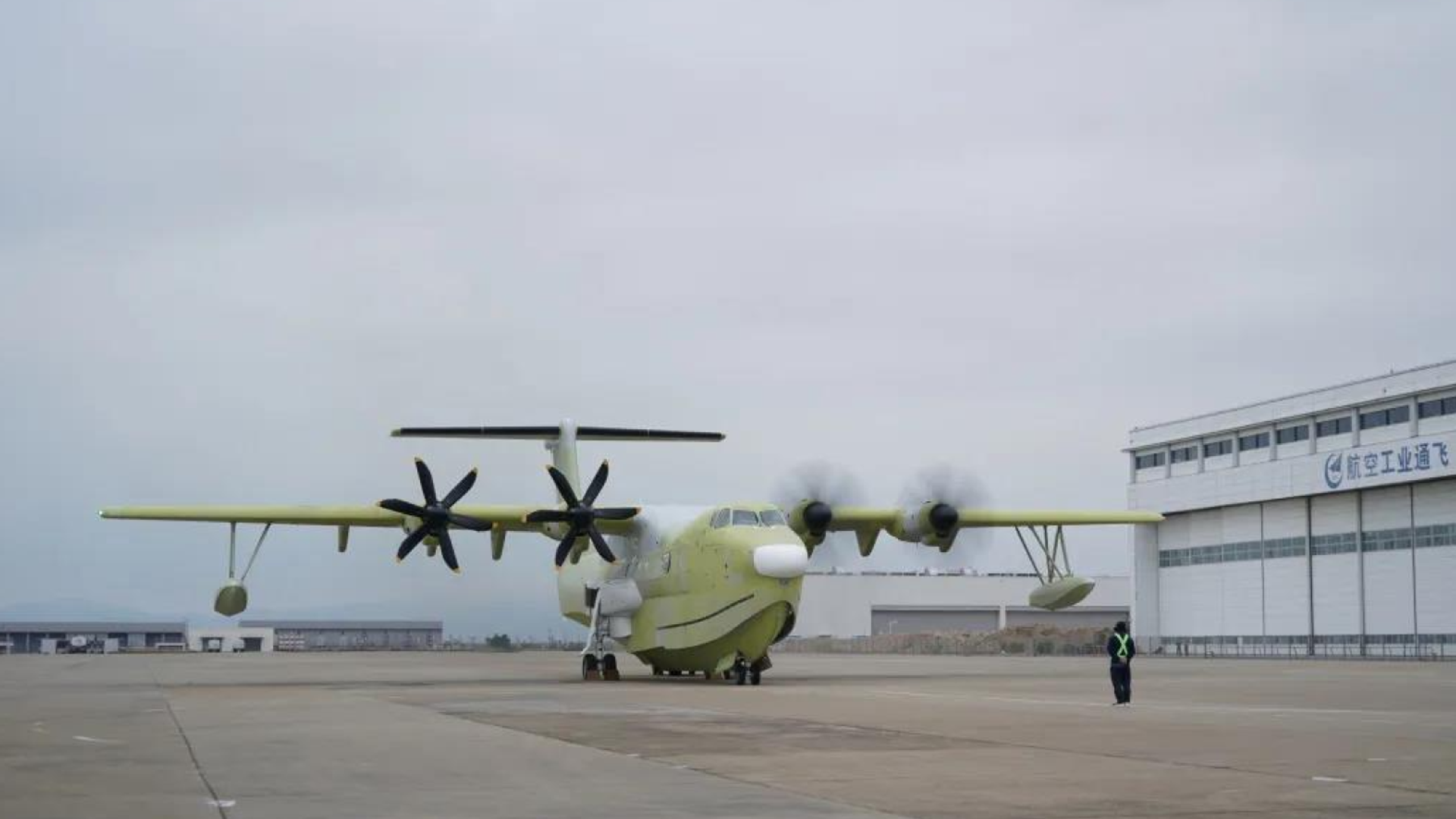Watch: China Tests Out New Prototype of World’s Largest Amphibious Aircraft
Subscribe
Seaplanes are extremely versatile aircraft, able to land on any river, lake, or stretch of sea, plus on standard land runways, if they have regular landing gear. Developing one has been a top priority for China, not just because it has ample waterways, but because it sorely needs a powerful new rescue aircraft.
The Aviation Industry Corporation of China (AVIC) said on Thursday it had fired up the four turboprop engines on its AG600-1003 prototype, which it hopes will become China’s standard flying boat.
Given the name Kunlong, the aircraft was finished being assembled on December 26, 2021, and all four engines checked out in the test, China Central Television (CCTV) reported.
“The AG600 aircraft has completed more than 100 hours of scientific test flights, accumulating and acquiring a large amount of flight test data,” AVIC said in a statement, according to the South China Morning Post.
“The research team improved the key design theories, methods and verifications such as in aerodynamics and hydrodynamics for the amphibious aircraft and made further breakthroughs in the key technologies of amphibious aircraft design.”
With a length of 121 feet and a wingspan of 127 feet, the AG600 is about the size of a Boeing 737 airliner, and bigger than the largest seaplane presently in service: Japan’s ShinMaywa US-2. The plane is expected to fill valuable roles in search and rescue, firefighting, and marine rescue, as well as other maritime roles.
Like other flying boats, the bottom of the AG600’s fuselage doubles as a boat hull, allowing it to float on the surface of the water. It also has two pontoon stabilizers on its wingtips to keep it from rolling over while sitting in the water. However, it also has retractable landing gear that allow it to takeoff and land from ordinary landing strips, and when the gear retracts it folds into pontoons on the side of the fuselage that also add to the plane’s stability on the water.
Its four engines are WJ-6 turboprop engines, a license-built version of the Soviet AI-20 engine built by Ivchenko design bureau and used in China’s Shaanxi Y-8 and Y-9 aircraft, as well as Tu-4, the Soviet Union’s reverse-engineered B-29 bomber, and the Il-38 maritime patrol aircraft still in use by the Russian Federation.
However, this isn’t the first iteration of the AG600. The first version flew for the first time in 2018, but a comparison between that aircraft and the present one shows extensive redesigning of its hull, as well as repositioning of its cockpit to be higher and further back.
AG600の1001(B-002A)と1003の比較。
— 黒羽 (@shiki_kuroha) February 11, 2022
操縦席が後方に移動、上部動体拡大、前方船底と溝形波消し装置の形状変更、主脚バルジ変更と、大型のフラップトラックフェアリングは主翼フラップ構造変更?
1003写真: 航空工业微博https://t.co/MESY6m6wFX pic.twitter.com/Co8uSib6jC
China presently has a handful of Harbin SH-5 flying boats, which is almost as large as the US-2 and dates to the 1980s. It’s unclear if they would be retired or complemented by the AG600 once the newer plane enters service. New Zealand and Malaysia have expressed interest in buying the plane, and AVIC may market it to island nations, but it reportedly plans to fill relatively few orders for the seaplane.

